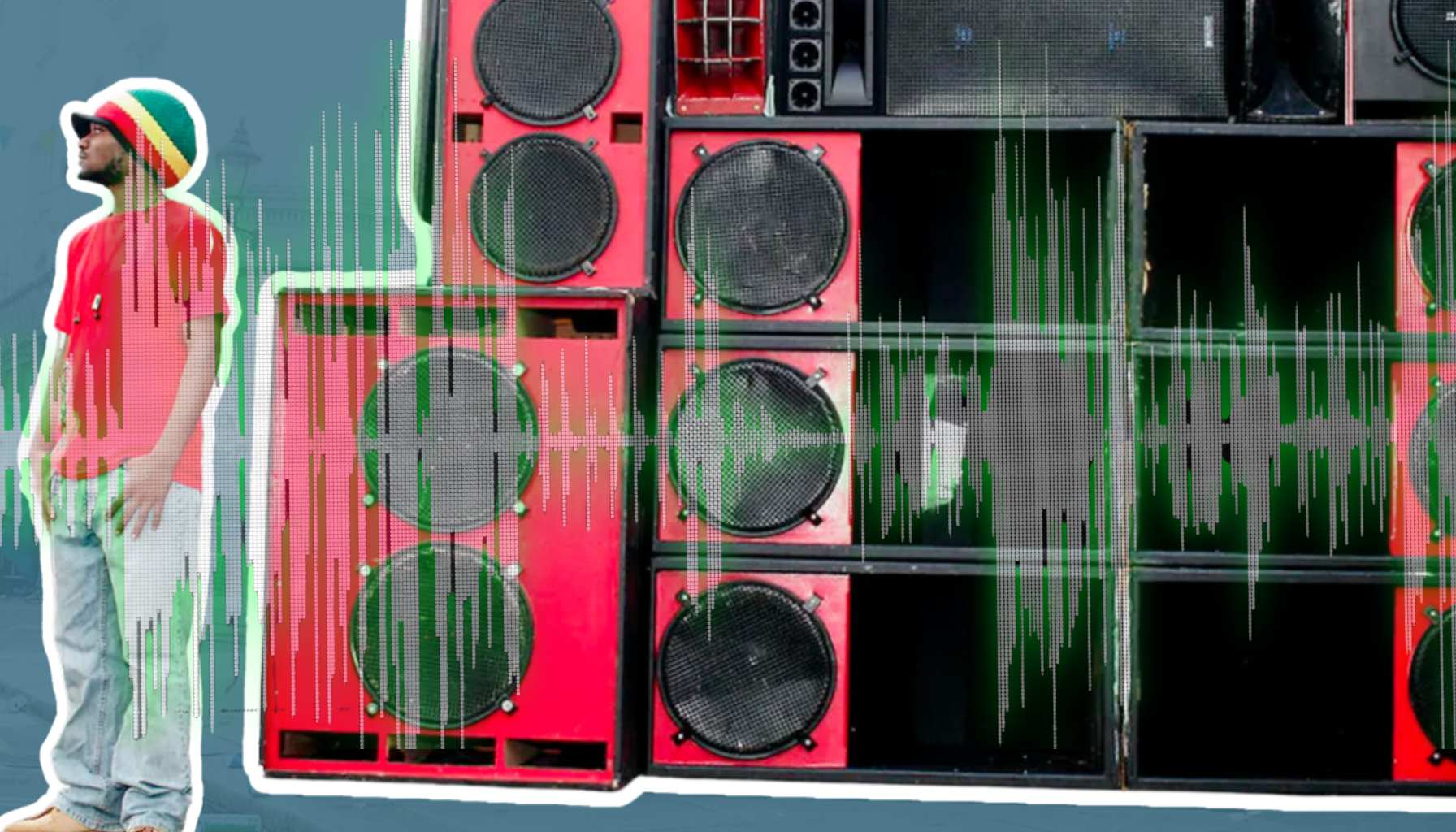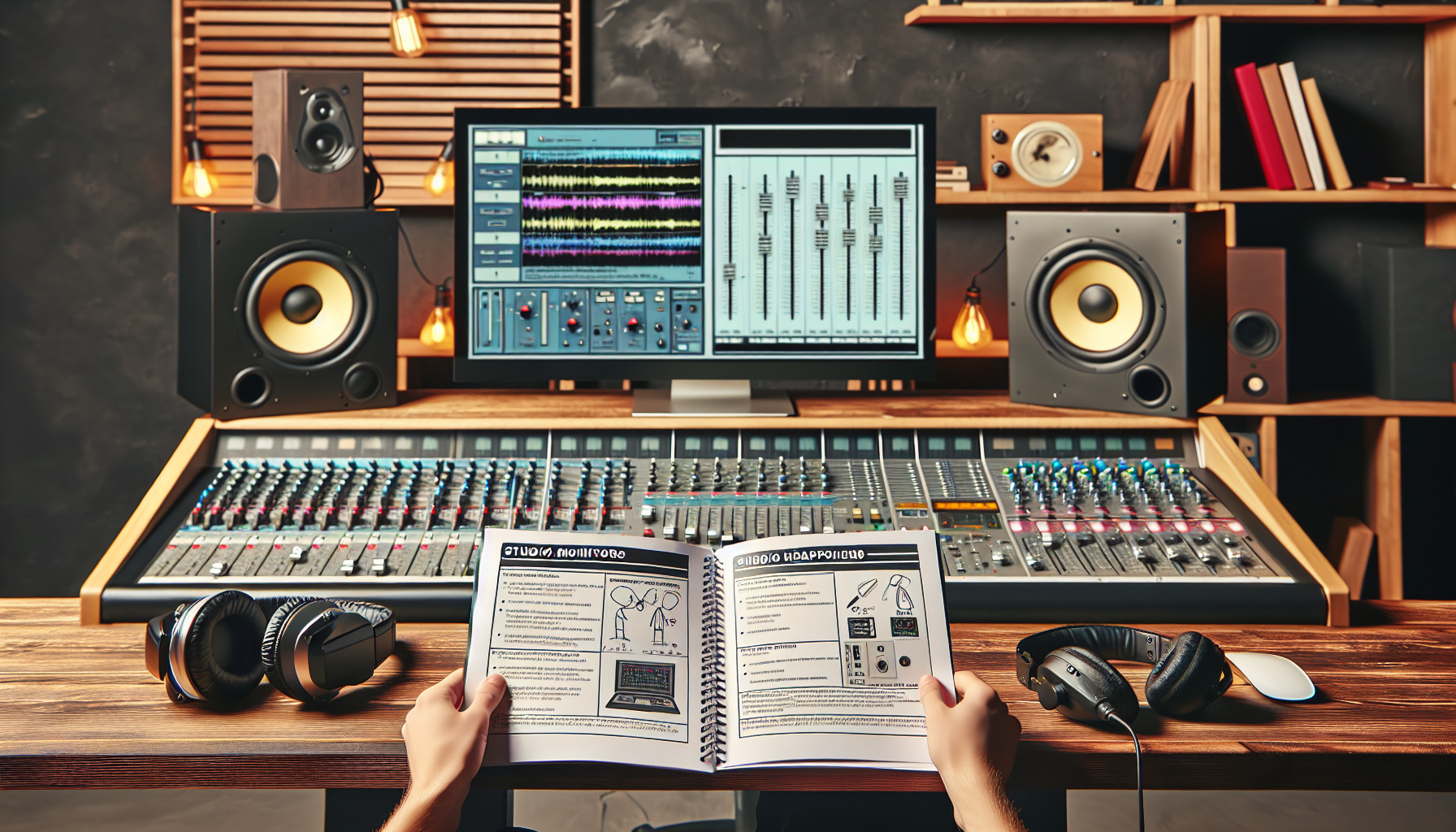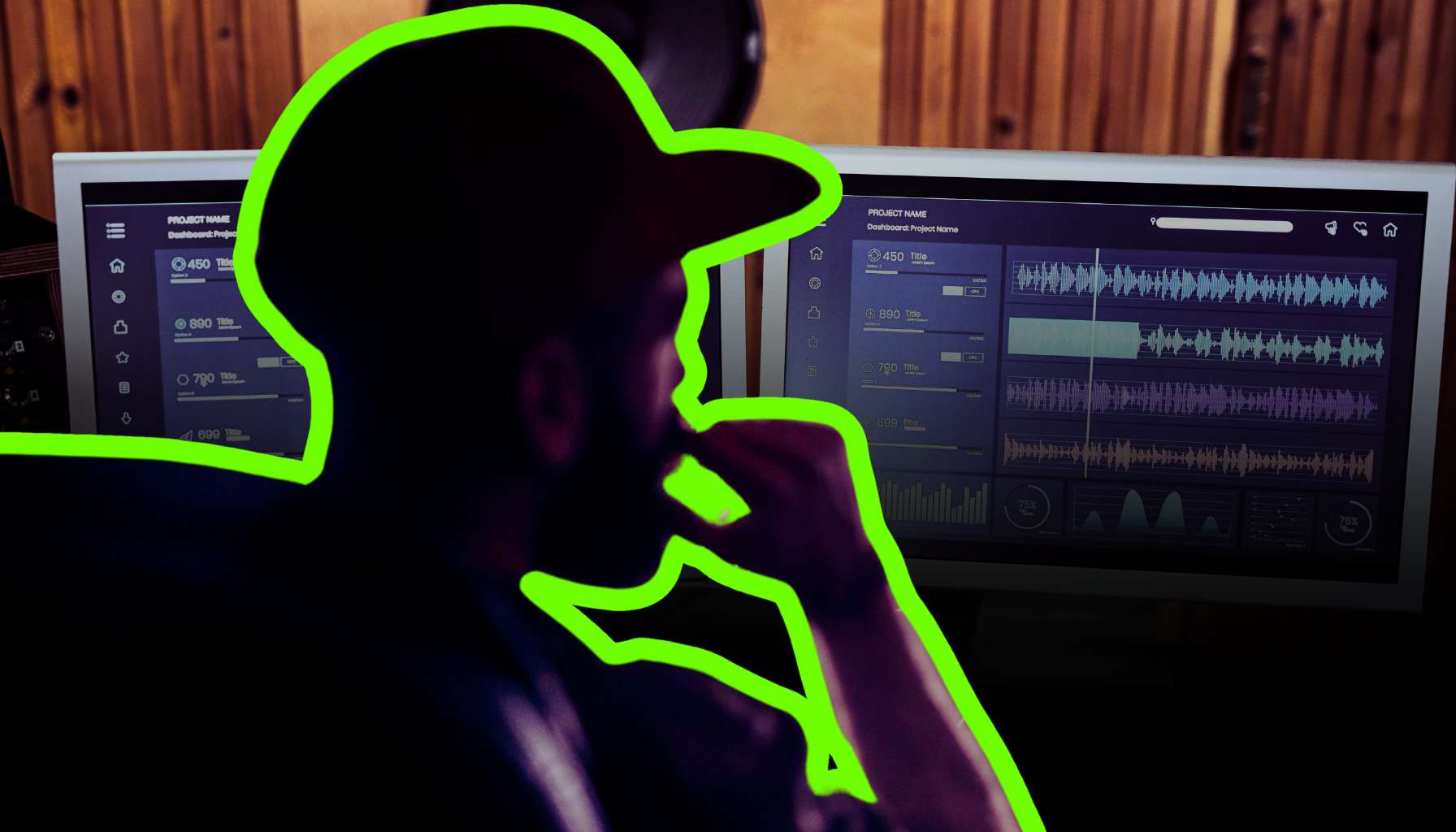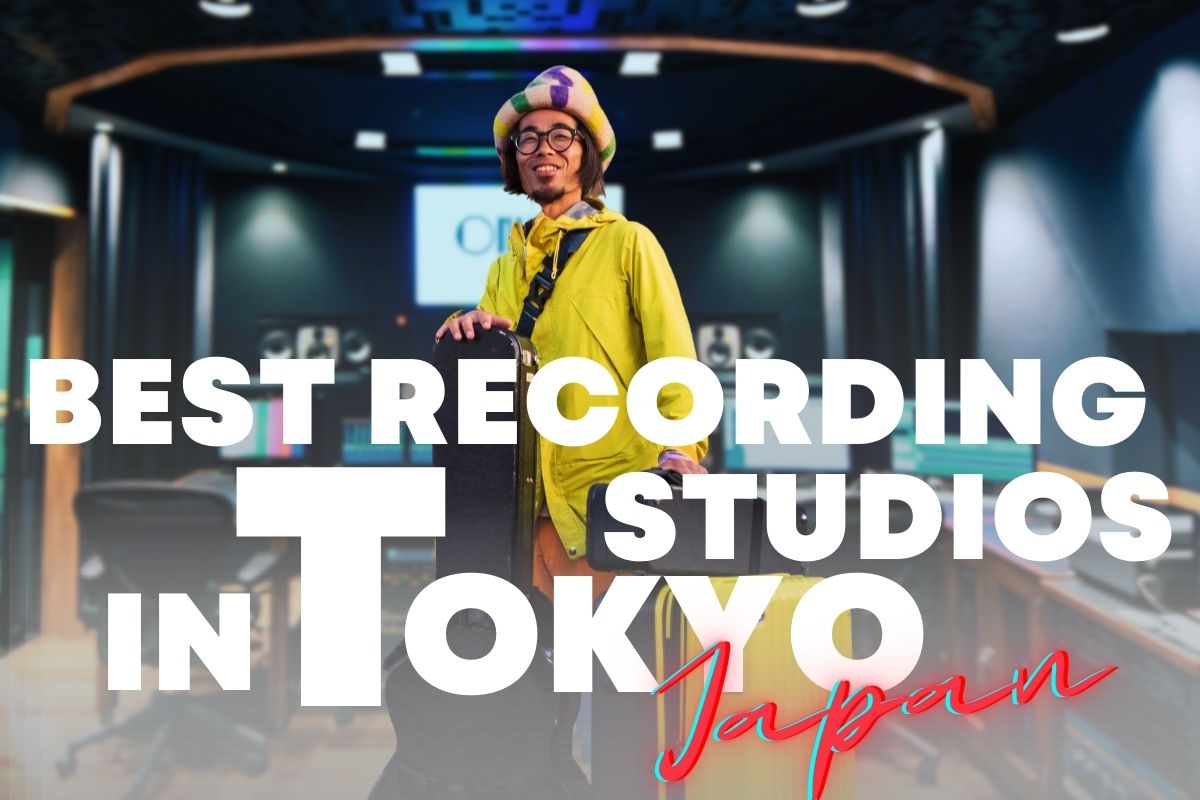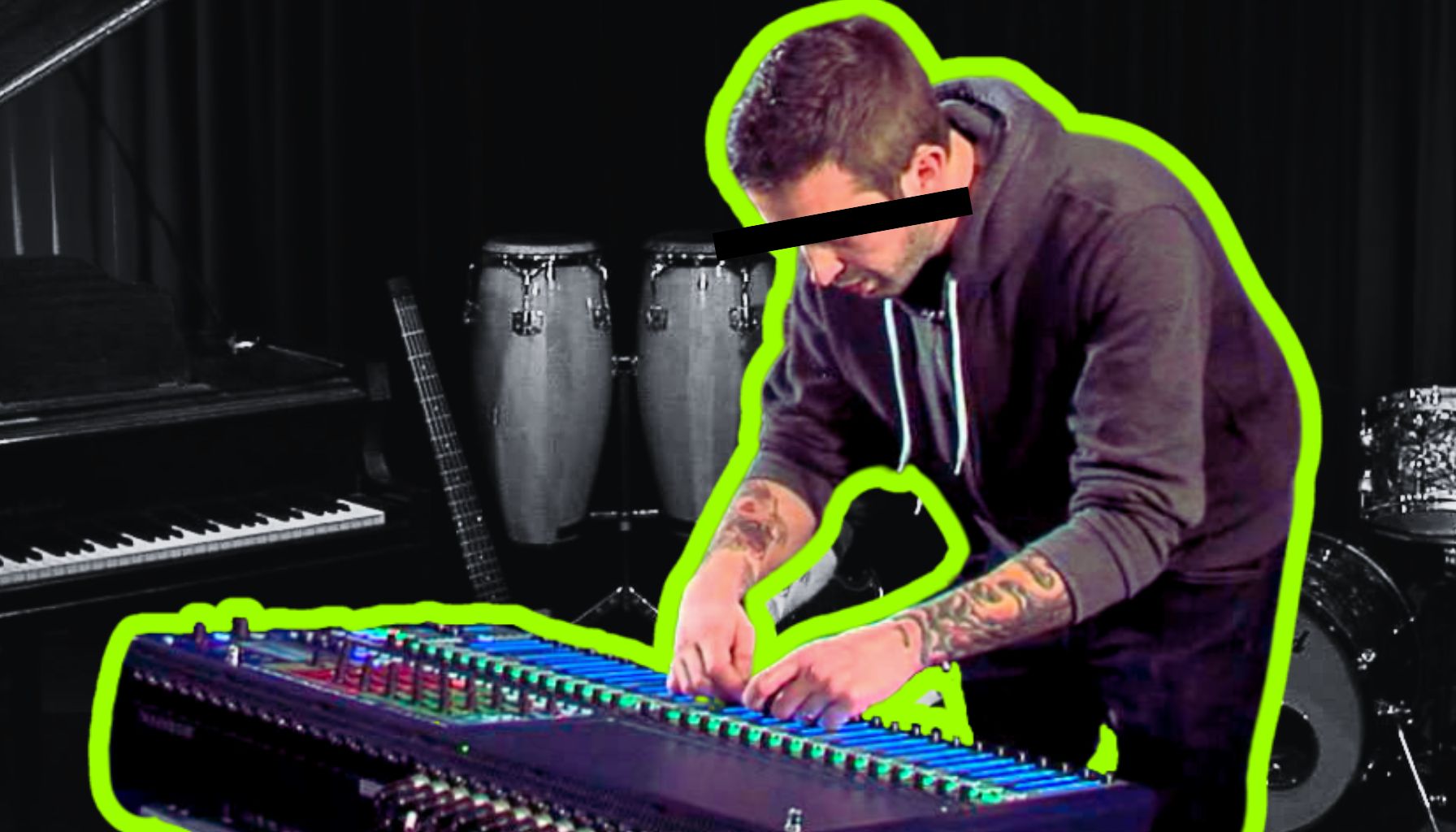Introduction: The Art of Field Recordings in Music Production
Imagine you’re strolling through the heart of a bustling city, the air pulsing with the symphony of urban life. Or perhaps you’re perched on a mountaintop, surrounded by a choir of chirping crickets and whispering winds. These are the raw materials of field recordings, the unsung heroes of sound design that infuse music with the breath of the world outside the studio.
Understanding Field Recordings and Their Role in Sound Design
Defining Field Recordings
So, what are field recordings? In essence, they are audio snapshots captured in the wild – the aural essence of any environment, be it nature, cities, or even the hum of a refrigerator. These recordings are the spice rack of sound designers and music producers, adding unique flavors that pre-packaged samples just can’t match.
Historical Context and Contemporary Usage
The practice isn’t new; it’s been around since the first audio recorders were lugged into the Amazonian jungles. Today, it’s not just the realm of boffins with more cables than sense. Modern musicians across genres harness these sounds to anchor their tracks in reality or take listeners on an auditory odyssey to places they’ve never been.
The Aesthetic Value of Field Recordings in Music
Creating Texture and Atmosphere
Beyond mere novelty, field recordings serve up texture and atmosphere on a silver platter. A crackling fire or a bustling marketplace can transform a track from a two-dimensional sketch to a three-dimensional masterpiece. It’s about adding a layer of sonic depth that can’t be synthesized or conjured up in a sterile booth.
Embodying Realism and Authenticity in Compositions
When it comes to music that hits you in the feels, authenticity is key. Field recordings are the secret sauce that gives compositions a heartbeat, making them palpable and profoundly human. They’re not just sounds; they’re experiences, memories, and moments that resonate on a primal level.
As we venture into the nitty-gritty of capturing these elusive sound sprites, we’ll arm you with the knowledge to wield your microphone like a sonic sword, slicing through the cacophony to capture the pure essence of sound. So, strap on your boots, and let’s prepare to dive into the world of field recording – a world where the environment is your instrument and every sound tells a story. Ready to elevate your audio arsenal?
Next up, we’re talking gear. From the right mics to portable recorders, we’ll ensure you’re kitted out to capture the world in all its unscripted glory. Whether you’re a seasoned sound collector or a newbie with a smartphone, there’s a world of sound waiting to be discovered, and it’s time to start your collection.
Capturing the World: Techniques for Quality Field Recording
Armed with an understanding of the aesthetic value of field recordings, you’re ready to step out and start capturing the sonic treasures that the world has to offer. But before you march into the wild, it’s crucial to gear up with the right tools and techniques. After all, even the most golden of sunsets won’t look good through a smudged lens, and the same goes for capturing pristine audio.
Essential Equipment for Field Recording
Choosing the Right Microphones
The microphone is your ear to the world, so picking the right one is like choosing a pair of glasses—what do you want to see, or in this case, hear? Will it be a sensitive shotgun mic that picks up the chirp of a distant bird, or a robust dynamic mic for the roar of a waterfall? Understanding the nuances of microphone polar patterns and sensitivity is key to ensuring you capture the sound you’re after without the noise you’re not.
Handy Recorders and Accessories for Mobility
Mobility is the name of the game in field recording. That’s where handy recorders come in, offering a blend of quality and convenience for sound hunters on the move. And don’t forget the accessories—a good windscreen to keep the breeze at bay, a shock mount to ward off handling noise, and a sturdy bag to carry it all. It’s about being prepared because Mother Nature doesn’t do retakes.
Field Recording Best Practices
Selecting the Recording Environment
The environment is your studio, and its acoustics are just as important. The echo in an alleyway, the hush of a forest at dawn—these are the natural reverbs at your disposal. Choosing the right location is as much about the sounds you want as the ones you don’t. It’s about finding that sweet spot where the ambient noise complements your subject, not competes with it.
Techniques for Capturing Pristine Audio
Once you’re on location, it’s about technique. It’s about creeping up on your sound source like a wildlife photographer stalking a rare bird. It’s about patience, about holding your breath as you hit record, and about knowing when to move on because the siren in the distance just became your unwanted backing vocalist.
Overcoming Common Challenges in the Field
And let’s not kid ourselves, challenges will arise. The wind will howl, the traffic will rumble, and at some point, someone will honk a horn at the most inopportune moment. Overcoming these challenges is part of the craft—using directional mics to minimize noise, finding natural barriers to block unwanted sounds, and sometimes, just waiting for the right moment. As we wrap up our foray into the art of capturing sounds, we look ahead to the treasure trove of audio you’ll amass.
But what to do with all these sonic gems? That’s where the next step comes in—curating your sound library. It’s about transforming a collection of raw audio into a well-organized vault of inspiration, ready for you to dip into whenever creativity calls. So, get ready to tag, catalog, and store your sounds, because in the next section, we’re taking your field recordings from the wild into the archive.
Curating Your Sound Library with Field Recordings
Fresh from the great outdoors, your hard drive is brimming with the raw chatter of the world. But before these sounds can breathe life into your compositions, they need some TLC in the digital realm. It’s time to roll up your sleeves and turn your eclectic mix of audio files into a curated sound library that’s more organized than a librarian’s bookshelf.
Organizing and Cataloging Your Sounds
Tagging and Metadata for Easy Retrieval
Let’s face it, “Track001.wav” tells you as much about the sound as “Mystery Meat” does about your lunch. Tagging your field recordings with descriptive metadata is like leaving breadcrumbs back to the exact sound you need. It’s not just about naming your files—it’s about painting a picture with words so that six months down the line, “Dawn Chorus in Borneo” brings you right back to that chorus of birds as the sun peeked over the horizon.
Storage Solutions for Field Recording Archives
A treasure like your sound library deserves a vault, and in the digital age, that means a solid storage solution. Whether it’s a beefy external hard drive or a cloud service that holds more data than your brain can fathom, make sure it’s reliable, because there’s nothing more tragic than a hard drive crash that sends your sounds into the abyss.
The Legalities of Using Field Recordings
Understanding Copyright and Public Domain
In the pursuit of capturing the world, don’t forget that the law is always listening. Copyright and public domain issues are the vegetables of the field recording feast—perhaps not the most exciting part, but essential for a balanced diet. Navigating these legal waters ensures that your use of these sounds won’t end up with you in hot water.
Navigating Permissions for Recording in Public and Private Spaces
Recording in public spaces can be a legal minefield, and the last thing you want is for your perfect take to be interrupted by a tap on the shoulder from Johnny Law. Knowing when you need a permit or a property release is as important as knowing your mic from your recorder. A little research goes a long way in avoiding a courtroom drama over your latest audio capture. As you whip your sound library into shape, with each file meticulously tagged and legally cleared for use, you’re on the cusp of breathing new life into your compositions.
But how do you go from raw audio to the polished sounds that define your musical identity? In the next section, we dive into the alchemy of processing and manipulating your field recordings, where you’ll learn the secrets to distilling pure sonic gold from the raw elements you’ve collected. So get ready to chop, stretch, and mold your sounds into forms that even Mother Nature didn’t see coming.
Creative Processing and Manipulation of Field Recordings
You’ve conquered the wilderness, your sound library is a marvel of organization, and the legalities have been tamed. Now, the real magic begins. It’s time to take those raw field recordings and sculpt them into the sonic building blocks of your next musical masterpiece. But how do you transform the cacophony of life’s soundtrack into polished, production-ready elements? The answer lies in the alchemy of audio processing.
Editing and Cleaning Up Field Recordings
Techniques for Noise Reduction and Clarity
Let’s get one thing straight: no matter how stealthy you were in the field, some rogue sounds have infiltrated your recordings. They’re like those party crashers who somehow always find the snacks. Noise reduction software is your bouncer, subtly escorting the unwanted hiss, hum, and rumble out of your tracks without causing a scene. By harnessing tools like spectral editing and noise profiling, you can achieve the clarity your audio deserves, making it ready for the spotlight.
Trimming and Fading for Seamless Integration
Next up, trimming and fading. These are the unsung heroes that ensure your sounds don’t just enter and exit with all the subtlety of a bull in a china shop. By carefully shaping the beginnings and ends of your recordings, you create seamless loops and natural-sounding fades that blend effortlessly into your tracks. Think of it like tailoring a suit – the perfect fit makes all the difference.
Advanced Sound Design with Field Recordings
Layering and Texturing for Richness and Complexity
Layering is not just for cakes and winter clothing. It’s a potent strategy in sound design, too. By stacking different field recordings, you can craft rich, complex textures that are as unique as your creative fingerprint. Imagine the rustle of leaves under a gentle rain, or a distant train horn mingling with the murmur of a crowd. These are the layers that give your music depth and dimension.
Manipulating Pitch, Tempo, and Dynamics for Creative Effects
Now, let’s talk about pitch and tempo manipulation – the playdough of the audio world. Slowing down a recording can unearth a haunting drone from a mundane hum, while pitching up can turn a door creak into a symphony of eerie squeals. And let’s not forget dynamics – compressing for punchiness, expanding for drama. It’s all about bending sound to your will and creating something truly unique. With your field recordings now sparkling with clarity and brimming with creative potential, you’re ready to unleash them into your compositions.
But how do you use these sounds as a source of musical inspiration? That’s where we’re headed next. Prepare to explore the power of audio to trigger creativity, evoke emotions, and tell stories. You’ll learn how to use field recordings not just as embellishments, but as the heart and soul of your music. So, tune your ears to the world’s frequency – your next sonic adventure is about to begin.
Using Field Recordings as a Source of Musical Inspiration
Now that you’ve morphed those environmental symphonies into clean, malleable tracks, it’s time to let them loose in your musical playground. But hold your horses—before you unleash the raw power of those recordings, let’s talk inspiration. After all, what good is a paintbrush if you don’t know what to paint?
The Power of Audio to Trigger Creativity
Field Recordings as a Starting Point for Composition
Picture this: you’re staring at a blank DAW session, and the dreaded producer’s block hits you like a sack of bricks. Enter field recordings, your sonic muse. Those chirping crickets might morph into a rhythm section, or that urban cacophony could inspire a gritty bass line. It’s about finding the rhythm in the chaos—the music in the mundane. Field recordings are more than just sound bites; they’re the seeds from which entire compositions can grow.
Evoking Emotions and Stories Through Ambient Sounds
Ever heard the saying, “A picture is worth a thousand words”? Well, a sound can tell a whole story. The eerie whistle of a midnight train evokes longing; the cacophony of a cityscape pulses with life. These aren’t just sounds; they’re emotional triggers, pulling listeners into the narrative woven into your tracks. They’re your secret weapon for storytelling through sound.
Thematic Integration of Field Recordings
Matching Recordings to Conceptual Themes
So you’ve got a concept—an album that explores the depths of the ocean or the vastness of space. What better way to breathe authenticity into your theme than with field recordings? The haunting call of a whale or the eerie silence of a windswept desert can transport your listeners to another world. It’s about matching the right sound to your vision, creating a sonic landscape that’s as vivid as your imagination.
Building a Sonic Palette for Your Project
Each project demands its own unique sonic palette, and your curated field recordings are like the colors on your palette. It’s about choosing the right shades—the splash of a wave, the rustle of leaves—to paint the auditory picture you’re aiming for. These sounds become the building blocks of your tracks, giving them a texture and depth that synthesized sounds can only dream of. As you weave these authentic sounds into your compositions, you’re not just making music; you’re crafting an experience.
But where do these experiences fit in the grand tapestry of music genres? That’s where we’re headed next. From the intimate spaces of ambient music to the bustling stages of pop and rock, we’ll explore the genres and styles where field recordings don’t just thrive—they transcend. So, buckle up and get ready to embark on a sonic journey that spans the spectrum of the musical universe.
Genres and Styles: Where Field Recordings Thrive
Field recordings are the chameleons of the sound world; they adapt and blend into any musical landscape they encounter. But where do they find their most harmonious homes? Let’s traverse the sonic terrain to uncover the genres and styles where these natural soundscapes flourish, adding layers of authenticity that synthesized sounds can only envy.
Exploration of Ambient and Experimental Music
Signature Use of Field Recordings in Ambient Works
Ambient music is like the canvas for the painterly field recordist. It’s a genre that embraces the subtle, the atmospheric, and the textural. Here, field recordings are not just a garnish; they are the main course, serving up an immersive soundscape that can transport the listener to faraway lands or introspective states. Artists like Brian Eno and Stars of the Lid have long known this secret, weaving field recordings into their works to create soundscapes that are as expansive as the universe itself.
Case Studies of Prominent Works and Artists
Take a deep dive into the discographies of [Tim Hecker](https://pitchfork.com/artists/3245-tim-hecker/) or [Biosphere](https://www.discogs.com/artist/8-Biosphere), and you’ll find a treasure trove of albums where the line between “found sound” and “composed music” blurs beautifully. These artists are maestros of molding the raw materials of the world into auditory gold, proving that field recordings can be the heartbeat of avant-garde expression.
Beyond the Niche: Field Recordings in Popular Genres
Subtle Texturing in Pop and Rock Production
You might think that field recordings are reserved for the fringes of music, but they’ve been hiding in plain sight in pop and rock too. Ever noticed the sound of waves crashing in a ballad or the distant thunder in a rock anthem? These are the Easter eggs that field recording enthusiasts live for. They add a layer of depth and reality to productions that can make a song feel like it’s breathing the same air we do.
Field Recordings in Cinematic Scores and Soundtracks
And let’s not forget the silver screen, where field recordings have been the unsung heroes behind some of the most iconic soundtracks. They’re the gusts of wind in a Western standoff, the bustling city sounds under a car chase, the chirping birds in a romantic scene. Composers like Hans Zimmer and John Williams have harnessed the power of field recordings to elevate storytelling, creating aural landscapes that stick with us long after the credits roll.
As you can see, field recordings are the Swiss Army knife in a sound designer’s toolkit—they’re versatile, they’re evocative, and they’re everywhere. But how do you take these sounds from the studio to the stage? That’s where the rubber meets the road, or should we say, where the field meets the speaker. In the next section, we’re going to talk about the nitty-gritty of performing with field recordings.
From the challenges of live playback to the thrill of audience engagement, get ready to learn how these sounds can become an integral part of your live set. So, grab your gear, and let’s take this show on the road!
From the Field to the Stage: Performing with Field Recordings
After sculpting your ambient sounds and embedding them into studio productions, it’s time to consider the leap from the digital realm to the palpable energy of live performance. The thought of integrating field recordings into a live setting may seem like threading a camel through the eye of a needle, but with the right techniques, you can turn that sonic tapestry into a live masterpiece.
Techniques for Live Integration
Translating Field Recordings into a Live Setting
The transition from studio to stage can be as smooth as a vinyl record under a needle with the help of modern technology. Sampling hardware and looping stations have become the go-to allies for artists looking to bring the authentic sounds of their field recordings to the crowd. The key is to prepare your samples meticulously, trimming and cueing them up so that they can be triggered with the precision of a seasoned archer.
Utilization of Sampling Hardware and Software
The advent of sophisticated [sampling hardware](https://www.roland.com/us/categories/production/samplers/) and software has revolutionized live performances, enabling musicians to incorporate complex soundscapes with the tap of a pad or the click of a mouse. Platforms like Ableton Live have become playgrounds for live sampling, allowing you to juggle field recordings on the fly, merging the spontaneity of live music with the intricacy of sound design.
Audience Engagement Through Sonic Landscapes
Creating Immersive Experiences During Performances
The true power of field recordings in a live setting lies in their ability to transform a venue into an immersive experience. Imagine a concert where the audience is enveloped by the sounds of a rainforest, or a club where the beat is underpinned by the hustle and bustle of a city street. These are the moments that transcend the auditory and become visceral, leaving an indelible mark on the listener’s memory.
The Art of Storytelling Through Live Soundscapes
Field recordings are not just sounds; they’re stories waiting to be told. When woven into a live performance, they can guide the audience on an auditory journey, where each sound becomes a narrative thread. This is the art of storytelling through sound, where the line between concert and sonic cinema becomes beautifully blurred. Now, as we’ve explored the potential of field recordings on stage, let’s shift our focus to the broader community.
The world of field recording is a collective hive of creativity, where sharing and collaboration are not just encouraged but are the lifeblood of the craft. In the next section, we delve into the communal spirit of field recording, exploring the platforms, projects, and partnerships that are expanding the horizons of this art form. From online forums to crowd-sourced sound libraries, get ready to join a world where the sounds of the earth are a shared language, a common bond that unites us all.
Collaboration and Community: Sharing the Sounds of the World
Just as bees buzz harmoniously within their hive, field recordists around the globe are buzzing with collaborative energy in vibrant communities. These sound collectors share more than just audio files; they share a passion for capturing the heartbeat of our world. Whether you’re a seasoned audio artisan or a newbie with a handheld recorder, these communities are a treasure trove of knowledge, resources, and, most importantly, inspiration.
Participating in Field Recording Communities
Online Platforms and Social Groups for Enthusiasts
The digital age has been a boon for field recordists, connecting individuals across continents through [online platforms](https://freesound.org/) and social groups. Here, enthusiasts can swap stories, exchange tips, and share their latest sonic captures. These communities act as both a support system and a creative catalyst, fostering growth and innovation within the field. So, if you’re feeling like a lone wolf in your audio endeavors, jump into the fray. You’ll find a pack of like-minded folks ready to howl along with you.
Collaboration Opportunities and Challenges Sharing of Field Recording Libraries
Sharing is caring, and in the field recording world, it’s also a way to broaden your sonic horizons. Collaboration opportunities abound, with artists pooling their resources to create expansive sound libraries that are richer and more diverse than what they could achieve alone. However, navigating copyright and ensuring proper attribution can be tricky. Always make sure to give credit where credit is due and respect the legalities of sharing sounds to keep the good vibes rolling.
Field Recording Projects and Installations
Participation in Crowdsourced Projects
Crowdsourcing is not just for funding your cousin’s indie film; it’s also a powerful tool for field recording projects. By contributing to [crowdsourced sound maps](https://aporee.org/maps/), you can be part of a global effort to document the acoustic diversity of our planet. These projects not only serve as an archive for future generations but also as a rich source of material for artists looking to infuse their work with authentic world sounds.
Creating Audio Installations Featuring Field Recordings
Field recordings have the power to turn a mundane space into an auditory adventure. Artists are increasingly using these sounds to create audio installations that challenge the listener’s perception of space and sound. From art galleries to public parks, these installations invite passersby to stop and listen, to engage with their environment in a new way.
By participating in or creating these installations, you’re not just an artist; you’re a sonic architect, shaping the soundscape of our daily lives. As we draw the curtain on this section, remember that the journey of a field recordist is not a solitary one. It’s a path paved with the footsteps of a community that’s eager to listen, learn, and collaborate. In the next section, we’ll reflect on the impact of field recordings in music and encourage you to continue your exploration.
Whether you’re weaving them into your next album, performing them on stage, or sharing them with a community, field recordings expand your musical horizons in ways that are as limitless as the sounds themselves. So, let’s tune our ears to the conclusion and the endless possibilities that lie ahead.
Conclusion: Expanding Your Musical Horizons with Field Recordings
As we’ve journeyed through the world of field recordings, we’ve uncovered their role as the unsung heroes of sound design, the secret spice in the producer’s kitchen, and the soulful essence that can bring a musical piece to life. From the lush soundscapes of ambient tracks to the pulsating energy of live performances, field recordings have proven to be a versatile and vibrant element in the music production process.
Reflecting on the Impact of Field Recordings in Music
In reflecting on the impact of field recordings, it’s clear that they do more than just fill the silence; they narrate stories, evoke emotions, and create worlds. They’re the whispers of the wind in a quiet melody and the roar of a crowd in an anthemic chorus. Artists like [Chris Watson](https://chriswatson.net/) have elevated the art of field recording, turning it into a main character in the narrative of their music, rather than a mere backdrop.
Field recordings have taught us to listen differently—to hear the music in everyday life, to find the rhythm in the mundane, and to appreciate the symphony of natural sounds that surrounds us. They encourage us to explore, to experiment, and to express the world as we hear it.
Encouragement for Continued Exploration and Experimentation
So, what’s next on this auditory adventure? The soundscape is vast, and your map is your imagination. Whether you’re planning to brave the urban jungle with a recorder in hand or you’re content to explore the sound libraries available online, there’s always more to discover. Remember, the beauty of field recordings lies in their imperfections, their spontaneity, and their ability to surprise.
Dive into the deep end of audio exploration, mix the natural with the synthetic, and create something entirely new. Let the chirp of a bird inspire a melody, or the rumble of a train set the pace for your next track. There are stories out there waiting to be told, and you have the power to tell them through the universal language of sound.
As we bring this article to a close, we leave you with a sense of wonder and a challenge: to keep pushing the boundaries of what music can be with the help of field recordings. Continue to share your sounds and experiences, collaborate with the community, and keep the cycle of creativity spinning. Who knows what auditory delights await us around the corner?
Now, let’s tune in to the FAQs, where we’ll hit some high notes on the practicalities of incorporating field recordings into your work, ensuring that your next project resonates with the authenticity and texture that only the real world can provide.
FAQs on Incorporating Field Recordings for Unique Textures
Field recordings can weave a rich tapestry of sound that transforms your music from the mundane to the extraordinary. But with so many nuances to this art form, questions abound. Let’s dive into some FAQs that may be tickling your brain like a feather on a vinyl record.
What are field recordings, and how are they different from studio recordings?
Field recordings are audio captures of natural or environmental sounds, taken outside of the controlled studio setting. They can include anything from city ambience to the songs of birds in a forest. Unlike studio recordings, which are designed to capture the cleanest and most isolated sound of an instrument or voice, field recordings are all about authenticity and capturing the spirit of a place or moment in time.
How can field recordings enhance my music production?
Think of field recordings as your secret sauce, adding depth, texture, and realism to your tracks. They can set the scene, create a mood, or simply add an organic element that can’t be replicated with synthesized sounds. They’re the difference between telling your listeners about a place and taking them there.
What equipment do I need to start making field recordings?
The bare essentials include a portable recorder and a quality microphone, but don’t forget accessories like windshields and tripods. [Zoom](https://zoomcorp.com/) and [Tascam](https://tascam.com/) offer some great options for beginners and pros alike. Remember, the best equipment is what you actually use, so start with what you can afford and learn as you go.
Do I need permission to record sounds in public places?
This is a tricky one, as it depends on where you are and what you’re recording. Generally, recording in public spaces is fair game, but respect privacy and be mindful of local laws. If in doubt, it’s always best to ask for permission.
How can I incorporate field recordings into my existing music?
There are as many ways to incorporate field recordings into your music as there are sounds in the world. Use them as background atmosphere, rhythmical elements, or even the main focus of a track. Get creative with editing and processing to fit them into your musical vision.
Can field recordings be used in any genre of music?
Absolutely! While they’re a staple in ambient and experimental music, field recordings can add a unique layer to any genre—from jazz to EDM, and everything in between.
How do I clean up and edit field recordings for clarity?
Software like [Audacity](https://www.audacityteam.org/) or [Adobe Audition](https://www.adobe.com/products/audition.html) can be your best friends here. Use noise reduction tools, equalization, and high-pass filters to remove unwanted noise and highlight the sounds you want to feature.
What creative effects can be applied to field recordings?
Pitch shifting, time stretching, and granular synthesis are just a few ways to morph field recordings into something entirely new. Experiment with reverb and delay for added space or slice them into a sampler for a rhythmic effect.
Are there legal considerations I should be aware of when capturing and using field recordings?
When it comes to capturing sounds, copyright isn’t typically an issue unless you’re recording copyrighted music or speech. However, using recordings, especially if they’re recognizable, can be subject to copyright if you plan to release your music commercially. Do your research and err on the side of caution. With these FAQs, we hope to have cleared the fog off the window into the world of field recordings. But the exploration doesn’t end here. Continue to experiment, share, and engage with the sounds around you. After all, every sound has a story, and your music could be the perfect narrator.





